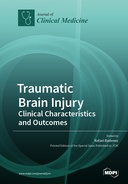Explore

As many of you already know, traumatic brain injury (TBI) is a growing public health problem of substantial proportions. More than 50 million TBIs occur internationally each year. Across all ages, TBI represents 30–40% of all injury-related deaths, and neurological injury is projected to remain the most important cause of disability from neurological disease until 2030. Severe TBI has a high mortality rate, estimated at 30–40% in observational studies on unselected populations. Survivors experience a substantial burden of physical, psychiatric, emotional, and cognitive disabilities, which disrupt the lives of individuals and their families, and impose huge costs on society. Wide variations in the clinical manifestations of TBI are attributable to the complexity of the brain and to the pattern and extent of damage. Over the past few years, a number of multicenter studies on the topic have emerged, helping to provide a better understanding of the condition. However, it is also clear that much remains to be learned.
This book is included in DOAB.
Why read this book? Have your say.
You must be logged in to comment.
Rights Information
Are you the author or publisher of this work? If so, you can claim it as yours by registering as an Unglue.it rights holder.Downloads
This work has been downloaded 68 times via unglue.it ebook links.
- 68 - pdf (CC BY) at Unglue.it.
Keywords
- acute brain injury
- Brain death
- brain–heart interaction
- cerebral blood flow
- cerebral oximetry
- cerebrovascular autoregulation
- classical test theory
- Clinical & internal medicine
- cognitive improvement
- COVID-19 Pandemic
- cranioplasty
- CT angiography
- CT perfusion
- death by neurologic criteria
- early tracheostomy
- emergency department
- Emergency Medical Services
- hyperoxia
- hypertonic saline
- hypoxia
- intracranial pressure
- late tracheostomy
- linguistic validation
- mannitol
- medicine
- modified early warning score
- Mortality
- near-infrared spectroscopy
- Neuropsychology
- osmolality
- osmolar gap
- outcome instruments
- oxygenation
- patient-reported outcome measures
- prehospital
- psychometric properties
- QTc interval
- scoring system
- seizure
- spatial QTS-T angle
- tracheostomy timing
- Translation
- Traumatic Brain Injury
- traumatic brain injury (TBI)
- treatment efficiency
- ventilatory acquired pneumonia
Links
DOI: 10.3390/books978-3-0365-5528-7Editions

